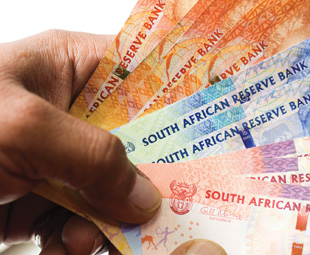An exchange rate in flux

Drawing a link between exchange-rate movements and the price of new vehicles is essential to ensure that exchange-rate risk is minimised
In September, I was fortunate enough to attend a breakfast during the Futuroad trade show, at which many delegates from the local commercial-vehicle industry were present.
The introduction of many new models and companies increasing their operating presence in the country was encouraging for the outlook of the market.
In the current economic climate in South Africa, manufacturers are required to be more efficient in navigating through the economic doldrums. For heavy-vehicle manufacturers, it is even more critical to be able to minimise exchange-rate pass-through.
As a small economy, South Africa relies on imports of whole or broken-down vehicles and parts. Unfortunately, this places both transport operators and local dealers at the risk of political and global risk-driven exchange-rate volatility.
Events such as the March Cabinet reshuffle, and the action by rating agencies Moody’s and Standard & Poors, saw the rand depreciate to near R14 to the dollar.
Conversely, global events, such as United States (US) dollar weakness and pressures stemming from US-North Korea tensions, have allowed the rand to trend into stronger territory throughout 2017. This is, of course, in the absence of political developments in South Africa that have previously caused volatility in the currency.
Further, it would appear that global oil demand has shown signs of a potential recovery. This has begun to push the oil price upward, narrowing already tight margins on operators and placing more importance on ensuring that fleet replacement is undertaken at a time when purchase prices are low.
In the climate of weak domestic demand, it is essential for a demand planner to account for the possibility of exchange-rate volatility when considering order lead times.
During discussions at Futuroad, the issue was raised that during periods of increased exchange-rate volatility, domestic suppliers face exposure in the lead time from ordering to delivery of vehicles in the country.
This can lead to drastic losses on vehicles sold, or high new-vehicle inflation that pushes purchase prices higher. Smaller operators – that do not have access to capital markets, or the ability to hedge against this risk – are particularly vulnerable, and may be forced to delay upgrading or replacing their fleets.
Therefore, drawing a link between exchange-rate movements and the price of new vehicles is an essential element to ensuring that exchange-rate risk is minimised. Econometrix attempted to understand the time it takes for exchange-rate fluctuations to translate into changes in vehicle prices.
The study revealed a significant amount of co-movement between new vehicle inflation and the exchange rate over three quarters, or nine months. This suggests that any changes in the exchange rate manifest in local vehicle prices nine months after the change.
Based on this, we can see that vehicle inflation is likely to tick up at a moderate rate into the beginning of 2018. However, with heightened political uncertainty (with the ruling party elective conference in December, and subsequent 2019 elections), the risks to inflation of new-vehicle prices pushing into 2020 may be high.
SAM Rolland is an automotive and transport economist at Econometrix. He is responsible for writing the Quarterly Automotive Outlook at Econometrix, as well as commentary and analysis on vehicle sales and transport price drivers. Prior to joining Econometrix, Rolland spent a number of years as an economist for the National Treasury of South Africa. He has also worked at Bloomberg New Energy Finance as a research analyst in conventional power.
Published by
Focus on Transport
focusmagsa



 !
From 1 Apri
!
From 1 Apri

 Big news from FOCUS on Transport + Logist
Big news from FOCUS on Transport + Logist





 FUSO: Driving the Future of Mobile Healthc
FUSO: Driving the Future of Mobile Healthc



 A brand
A brand




 Wondering about the maximum legal load for a
Wondering about the maximum legal load for a 
 The MAN hTGX powered by a hydrogen combus
The MAN hTGX powered by a hydrogen combus

 Exciting News for South African Operators
Exciting News for South African Operators

